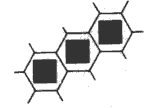|
In the HPS Early American Series &
almost all game systems having advance-after combat and
Zones-of-Control, there is a basic defensive doctrine which
should be followed with virtually religious zeal. It is: the
defensive line should be as straight as possible, running with
the "grain" of the hex pattern, and there should be one vacant
hex between each defensive position.
(This only works when "weak zone of control" optional rule is
not used. If that rule is used the defensive line must be
flexible and slowly recede for the tactic to be helpful.)
Optimum
Defensive Line
The advantages of such an
arrangement are these:
1. No unit can be surrounded when a
part of such a defense (neither in the Enemy Movement Phase nor
by advance after combat).
2. There are only two hexes from
which any position in such a line may be attacked.
3. The line is the most economical
use of units consistent with good defensive coverage.
4. If an Enemy unit succeeds in
advancing into one of the positions in the line, it is
relatively easy to counterattack such an exposed unit and regain
the line (there is also a good chance that the advanced Enemy
unit can be surrounded and destroyed).
The
Least Desirable Defense
The least desirable defense is one in which there are two vacant hexes between each defensive position in the line. This type of line allows the units to be easily surrounded (by three or more attackers) and destroyed. Such a position is easily shattered and difficult to retake.
The
Second Least Desirable Defense
It is also not desirable to defend
in a "packed" line, i.e., one in which all of the defending
units are adjacent to each other. This wastes units, and, more
importantly, allows the attacker to make front-to-flank attacks.
Defending Against the Grain
When defending on a line situation
against the grain of the hexagon grid, the units should be
positioned in a manner similar to the optimum defense, i.e.,
with a single hex between each. Because of the geometry of the
hex grid, the attacker will be able to attack any particular
unit from three hexes.
As an alternative to a simple
straight line against the grain, the player may wish to
"refuse" the flanks of every other unit, making these forward positions the strongest unit or stack of units. This makes the line strongest in the areas where the enemy can be the strongest (i.e., the only hexes against which three attacking groups can bear are those containing the strongest defending units).
Players should note that these
defensive formations are idealized and do not take into account
local terrain variations which may force upon the player less
orthodox defensive deployments.
Source: The Complete Wargames Handbook, 2nd Edition
originally posted at:
http://www.hyw.com/Books/WargamesHandbook/2-d-defe.htm
|

|
Every Other Hex Defense
|



